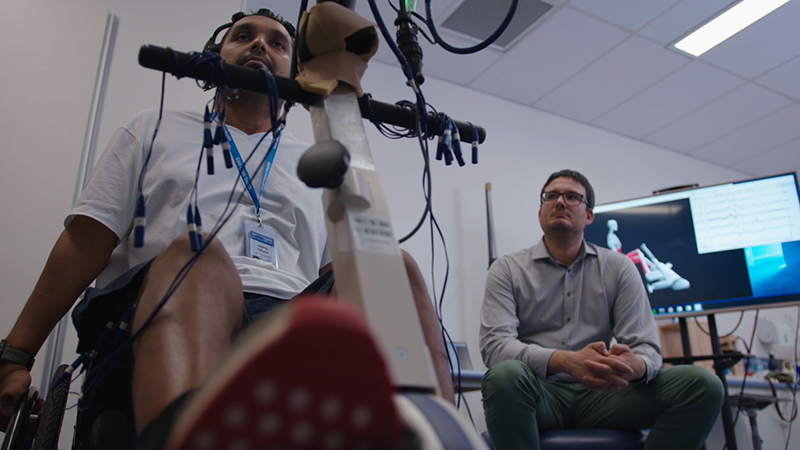
BioSpine research towards a spinal injury cure
A world-leading program led by Griffith University researchers Dr Dinesh Palipana OAM, Queensland’s first quadraplegic medical doctor, and research fellow Dr Claudio Pizzolato has potential to completely transform the way spinal injury patients are rehabilitated, with application for other forms of rehab as well.
The promising research, which uses novel personalised medicine technology to bring together the most promising approaches to treating spinal cord injury in human history, has secured a $2 million funding injection from the Motor Accident Insurance Commmission (MAIC).
With very personal motivation to make a difference, Dr Palipana says he is grateful the stars are aligning on the Gold Coast to create a holistic treatment that will help patients all around the world.
“We are using thought control, electrical simulation, and drug therapy in an attempt to restore function in paralysis.”
Dr Claudio Pizzolato says the research was inspired by work underway in Europe and the USA and centred on their world-first personalised ‘digital twin’ that brings a brain-computer interface together with a human-machine interface to ‘close the loop’ broken by spinal cord injury.
“Our approach involves collaborating with spinal cord injury patients, clinicians, researchers, and engineers from the beginning in order to create a technology that works and is easy to use in clinics and hospitals,” he said.
“The MAIC funding is an incredible opportunity to create disruptive technologies that have the potential to change people’s lives.”
Griffith Vice Chancellor and President Professor Carolyn Evans welcomed the generous support from MAIC and says it would enable a transformative research opportunity.
“Rehabilitation for spinal cord injury has traditionally been quite slow and limited, and even with recent advances in robotic rehabilitation equipment has not been personalised to the patient or combined with thought control,” Professor Evans says.
“MAIC’s commitment to this world-leading research is in addition to previous financial support for promising research into a regenerative medicine treatment for the injured spinal cord through stem cell transplantation. Funding for both innovative initiatives will help cement the university’s reputation in spinal cord injury research.”

The Biospine project is a key Griffith University led initiative which is anticipated will help position the Gold Coast Health and Knowledge Precinct (GCHKP) as a global leader in spinal injury rehabilitation.
Research will be carried out at ADaPT 1.0 with ADaPT 2.0 to be built within the GCHKP by 2022.